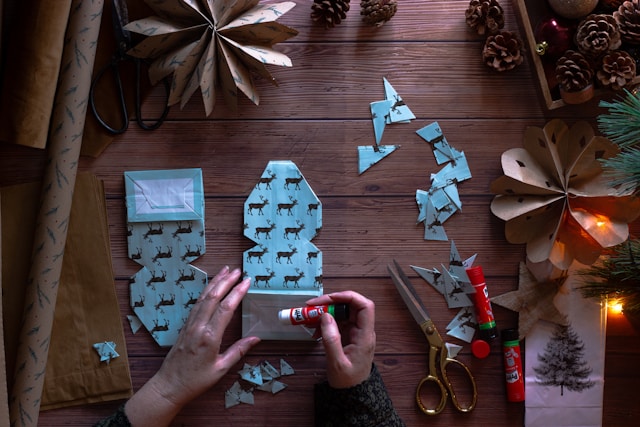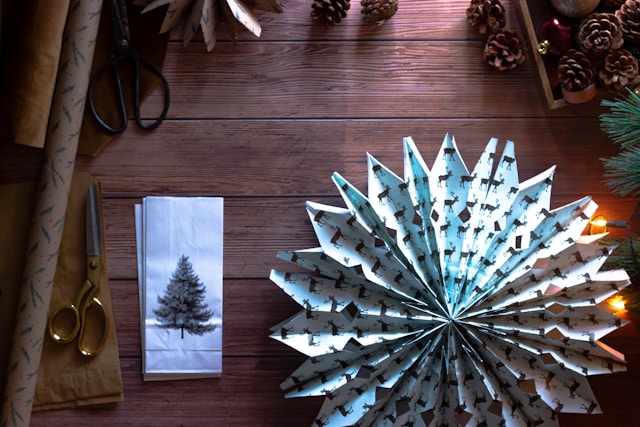Wood ornaments, with their historical significance and capacity to embody the beauty and versatility of nature in home décor and art, are These exquisite creations, constructed from oak, maple, cedar, or pine, embody the warm, organic essence unique to wood.
From simple holiday decorations to elaborate wall sculptures that convey a story, wooden ornaments are prized for their ability to subtly mix elegance with natural textures. In order to preserve this ageless legacy, this article will investigate the history and styles of wooden decorations, the materials used, the crafts processes, and a thorough instruction on how to create your own.
The Importance and Historical Context of Wood Ornaments
Woodworking has been an essential occupation in human culture for millennia. Wooden ornaments, often handcrafted, served as cultural icons, symbols of familial heritage, or emblems of religious convictions. Ancient Egyptian artists skillfully crafted little wooden figurines representing deities.
Early Christmas trees adorn Europe with wooden sculptures, a custom that finally extended around the world. Wooden ornaments symbolize warmth and tradition due to their simplicity, durability, and the craftsmanship required to transform them into art.
Woodworking techniques have evolved from rudimentary instruments such as knives and chisels to advanced machinery and laser cutting technology.
Handcrafted wooden ornaments are esteemed for their distinctiveness and aesthetic appeal. The creation of wooden ornaments has been a prevalent hobby in modern times, providing artists and DIY enthusiasts with avenues for expression through carving, painting, and assembling.
Styles of Wood Ornaments
Wooden decorations can be organized into many styles based on cultural influences, design inspiration, and intended use. These are some in-vogue looks:
1. Rustic: Natural, unpolished appearance of rustic ornaments is well-known; they sometimes leave rough textures and bark edges clearly. Holiday decorations often use rustic wood ornaments, therefore reflecting a warm, wood look.
2. Scandinavian ornaments: which are renowned for their simplicity and minimalism, usually feature light woods, such birch, and basic, geometric designs. If you leave them alone or paint them white, they give your home a modern and peaceful look.
3. Classic Carvings: Traditionally carved trinkets made from wood are full of common religious or symbolic designs. These items are very popular as Christmas decorations because they are hand-carved and often have bright colors added to them. They often have patterns like angels, stars, or animals.
4. Whittled figures: These are a form of wood carving that use a knife to create small, three-dimensional forms. Typically characterized by animals, diminutive beings, or eccentric motifs, these ornaments are prevalent in folk art.
5. Wood burning: This is the technique of burning drawings into wood by pyrography—that is, the use of a hot instrument. From simple outlines to intricate patterns and portraits, this technique allows complete artistic range.
Tools Needed for Make Wooden Ornaments
Making elegant and strong wooden ornaments depends on choosing suitable materials. This is a list of often used materials:
1. For beginners, softwoods like pine, cedar, and fir are easy to carve and work nicely.
The following: Ideal for precise work, hardwoods such as oak, walnut, and maple are denser and give a polished appearance.
2. For shaping and detailing, carving tools including knives, chisels, and gouges provide Various grades of sandpaper help to smooth and polish surfaces.
Paints and stains help to accentuate the inherent grain of the wood or provide color.
Should you wish to combine pyrography, Woodburning tool
3. While improving the natural beauty of the wood, natural oils—such as linseed or tung oil—offer a lasting finish.
Particularly helpful if the ornament will be handled regularly or shown outdoors, varnishes and lacquers create a protective covering.
4. Other Supplies : brushes for finishing and paint application.
Pencils for first design sketching
If the ornament is supposed to be hung, consider ribbons, twine, or hooks.
Crafting Methods for Wood Ornaments Crafts
Depending on the style and degree of detail sought, the method of making wooden ornaments can be basic or complex. These are some basic approaches:
1. Using a little knife, this method whittling shapes and carves wood into three-dimensional figures. It’s very appropriate for designing abstract forms, small people, or animal shapes.
Relief carving is the process of raising designs on the surface of a level piece of wood. It’s commonly used to embellish bigger ornaments or wall hangings with minute elements.
2. Woodburning:Pyrography burn patterns into the wood using a heated pen. Simple line drawings to complex, shaded graphics can be created by you. Popular for its flexibility and fine features this method lets,
3. Stainring and Painting: Wood ornaments can have vibrant colors and contrast added from paints and stains. For vibrant designs, acrylic paints are great; stains highlight the inherent grain of the wood. Surface protection comes from varnish sealing following painting or staining.
4. Finishing and Sanding: A professional look requires a smoothness that comes from sanding. For a polished finish, start with coarse sandpaper then work up finer grits. Using lacquer or natural oils accentuates the natural beauty of the wood and guards the adornment.
5. Assembly and Glues: To make a whole pattern, some ornaments could need gluing smaller pieces together. For strength, use wood glue; give plenty of time for curing. As components dry, little weights or clamps might assist to hold them in place.

Methodical Guide for Creating Wooden Decades
This book will help you through creating a basic but elegant wooden decoration using painting, sanding, and easy carving methods.
1. Selecting the Wood ornaments
Choose a piece of wood fit for the specified dimensions and design of the ornament. Because they are simpler to carve, softwoods like pine or cedar are perfect for novices. Choose a form; often used forms are abstract, animal, heart, and star shapes.
2. Design Sketching
Lightly sketch your design on the wood with a pencil. If you are creating a holiday decoration, give trees, reindeer, or snowflakes some thought. For year-round décor, floral designs or geometric forms work nicely. If you are new to woodworking, keep your designs basic since complex forms may call for more tools and skill.
3. Slice and Shape
If dealing with a solid block of wood, cut out your form with a tiny saw. If you own a jigsaw, cutting will be faster and more exact. Cut then smooth the edges with a carving knife and add any basic details. For a softer appearance, for instance, you might carve softened edges or create texture by gently etching lines.
4. Grasping sand
To smooth any rough edges, start with medium-grit sandpaper; then, for a polished appearance, advance to a finer grit. If your ornament has tight curves or is especially tiny, think about using a small, flexible sanding tool.
5. Including Details
Use a tiny brush for painting or a wood-burning tool for designs added for further details. If you wish a rustic, charred appearance, pyrography is perfect; paint can add vivid color. Try to let the wood grain form part of the design; for instance, you may outline a natural knot in the wood to provide the “eye” of an animal figure.
6. Applying Finish
Apply a wood finish to protect the ornament and improve its colour once your design is finished. Beesw wax or tung oil will provide a natural, subdued shine; a coat of clear varnish will increase longevity. Before handling, ensure sure the ornament completely dries.
7. Connecting Hanging Hardware
Drill a little hole at the top and put a screw eye or small hook to make your ornament a hanging item. Through the hole, thread a piece of twine, ribbon, or fishing line and tightly tie it.
Original ideas for Wood ornaments decorations
Try experimenting with several styles and techniques when you have mastered the foundations. These are several concepts:
Create holiday-themed wood ornaments by carving tiny snowflakes, Christmas trees, or stars then festively painting them. For a further embellishment, use metallic paint or glitter.
Burn names, dates, or brief notes into hardwood ornaments as individual gifts. These create original birthday or holiday presents.
Design influenced by nature: Create ornaments fashioned like animals, leaves, or acorns. Add natural color variances using wood stains.
Create neat, contemporary forms like triangles, circles, or diamonds out of wood pieces and paint them boldly.
Advice for Novices
- Start simple using simple forms and designs; first, as complex intricacies might be difficult initially.
Particularly when carving and sanding, woodworking calls for patience. Spend some time attaining a quality finish.
Particularly when handling tools, always use safety gear including gloves and goggles. - Work in a well-ventilated location; wood dust can be an irritant.
- Every kind of wood has special qualities; experiment with Wood Types. Try working with several forms to find which best fit your style.
- Keep Up Your Practice: the more
- As you practice, you will get more at ease managing tools and materials, which will result in more elegant and imaginative embellishments.
Notes
Because of their beauty, adaptability, and link to nature, wood ornaments are still a great popularity. From classic hand-carved figurines to contemporary minimalist designs, these ornaments honor the individual touch and effort of their creators.
Learning the fundamentals and experimenting with several techniques can help you design gorgeous, personalized wooden ornaments for any kind of event. Whether you’re making a beautiful item for your own house or a meaningful present, wooden ornaments have a classic charm that cuts across fads and brings the warmth of nature into any environment.


